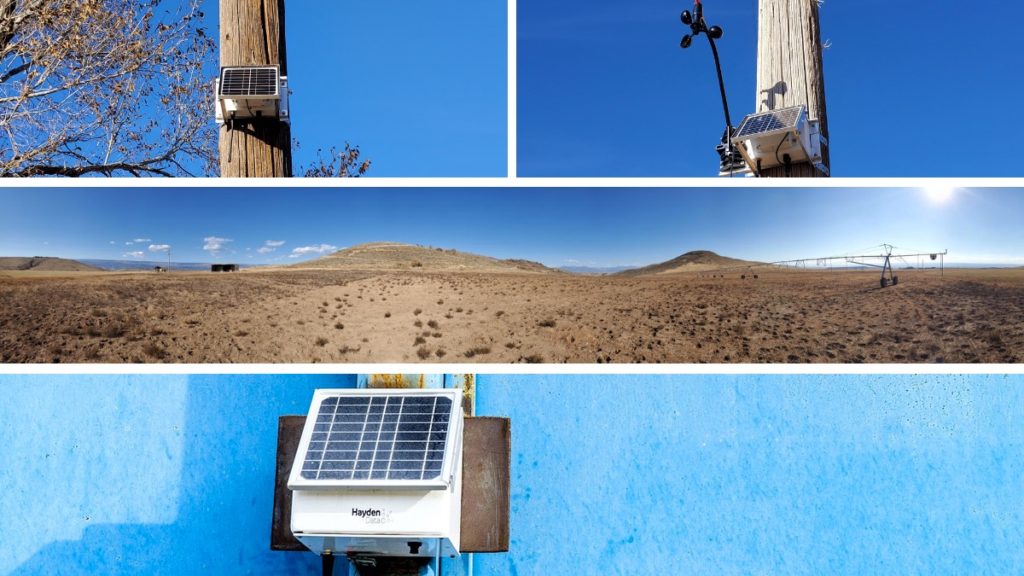The small, unincorporated community of Austin Colorado in Delta County, located at 5043 ft (1537 m) above sea level, lies in Colorado’s central-western slope’s high deserts. Its unforgiving climate and proximity to our Grand Junction office make it an ideal site for our extreme weather test facility.
On-site, we equipped a total of ten power poles with our devices: Two camera units, one wind unit, one rain device, five base units as well as one gateway, working in a fully functioning and self-healing meshed network, all communicating with each other in the sub 1 GHz range. They monitor the poles’ structural health, regularly take pictures, measure movement, temperature, wind, rain, and UV. They also detect smoke and gas and their operational parameters such as battery health and state of charge, CPU temperature, and signal strength, all while being independently powered by their solar panels
The units pass the data through our mesh network to the gateway, which transfers it through the cellular network to our server and makes it available to our control room in Grand Junction in near real-time.
Users can monitor the system from the comfort and safety of their office or a control room, as well as live in the field, as the data is available in near-real time through our proprietary awareness visualization platform, both in map as well as satellite view. When zooming out, the regional view allows for the user to visualize the health of the poles monitored, whereas drilling into the individual asset’s location allows to access the specific device’s data.
The weather data stream is available to a local solar farm operator, monitoring UV levels and cloud coverage. The devices’ smoke sensors would detect any nearby fire. Complementary visuals could serve as a remote area wildfire early warning and detection system for local fire departments and civil protection agencies.
As a clear sign of winter approaching, we have recently measured the coldest temperature since installing the devices a few months ago. On October 27th, the lowest measured value was -16.7°C or 1.94°F. We are happy to see the devices operating reliably under quite challenging climatic conditions.
Equally interesting have been the readings from the gas sensors: Around October 26/27/28 as well as November 14/15, the system automatically sent out alerts as thresholds of the gas sensors were being exceeded:
In the first case, the smoke and fire detection was activated, and from double-checking with the CO2 sensor readings we were able to determine the cause of the emissions to be planned and prescribed burns of a field about one mile from the sensor location. The second reading from November 14/15 stems from elevated methane levels that the sensors picked up. In this case the devices’ cameras uncovered the origin of the gas: a herd of cattle grazing nearby.
These two examples perfectly illustrate the system’s capabilities in terms of broader safety applications additionally to the structural health monitoring of the poles. Operating even in extreme temperatures, they reliably detected smoke, which in other cases could have been a wildfire, and emergency services would have been warned. In the second case, by picking up methane from a nearby herd of cattle, it demonstrates how the system, installed near gas pipelines or infrastructure could effectively monitor the areas’ safety, and detect any gas leaks.
